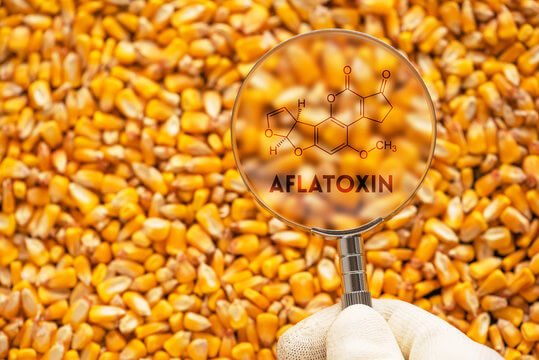TEST THE BEST
Safe food
saves life


Aflotoxin

what is the problem?
A person's survival is dependent on the quality and safety of the food they consume. According to WHO, aflatoxins are poisonous substances produced by certain kinds of fungi (molds) that are found naturally worldwide; they can contaminate food crops and pose a serious health threat to humans and livestock.
Aflatoxins also pose a significant economic burden, causing an estimated 25% or more of the world's food crops to be destroyed annually.
Most human exposure comes from nuts and grains.
Hepatocellular carcinoma (HCC), or liver cancer, is the third leading cause of cancer deaths worldwide. Research estimates the global burden of aflatoxin-related HCC. Of the 550,000-600,000 new HCC cases worldwide each year, about 25,200-155,000 may be attributable to aflatoxin exposure. Aflatoxin may play a causative role in 4.6-28.2% of all global HCC cases.
In Detoxive, we offer an inline aflatoxin detection device for grains by hyperspectral imaging. We mainly concentrate on peanuts and corn. The following are the key reasons why we chose these products in the first phase of our project:
Peanuts are the most consumed groundnut in the world. World production of peanuts was approximately 47 million metric tons in 2020. Aflatoxin can be transferred from peanuts to products made from peanuts, such as peanut butter.
Corn is a vital crop for local communities as well as the global food system. Corn is used for a variety of purposes, including animal feed, grain for human consumption, ethanol, as well as high fructose corn syrup, sweeteners, starch, and beverage/alcohol production. It is the world's most dominant and productive crop, with extensive areas of land dedicated to global production yields of over 1 billion metric tons. In addition, aflatoxin B1 can be converted to another dangerous type through cow's milk. Due to humans' daily consumption of milk, providing healthy corn for cows is very important.


Aflotoxins Detection Methods
A new technology that can detect aflatoxins on-site can save lives and open export markets for any country. Thanks to this groundbreaking development and a brand-new decontamination method, farmers and others will be able to detect instantly for the first time.
Traditional aflatoxin detection methods are labor-intensive, take considerable time, and can destroy the sample. They also can't scan large amounts of the sample.
Inline detection (Hyperspectral imaging) prevents the need to destroy or alter the structure of agricultural products, which saves time and money. Images taken with a hyperspectral camera have a unique feature. In these images, each pixel has three components, two components related to the location of the object and one component related to its spectrum. Therefore, the images will be in the form of three-dimensional cubes, each pixel of which has its own unique spectral information. In Detoxive, we use UV illumination and a hyperspectral camera. Aflatoxin is exciting by UV light due to its fluorescence property, and a hyperspectral camera will detect it.
Specifications of product
Accurate, rapid, and non-destructive method of detection
Obtain programmable data
Provides online inspection capabilities
Use the advanced artificial AI methods for the most accurate aflatoxin detection
